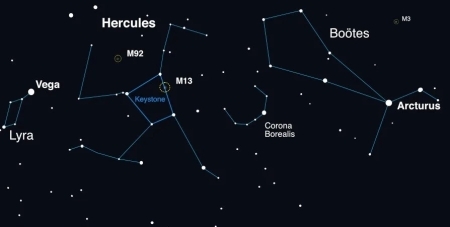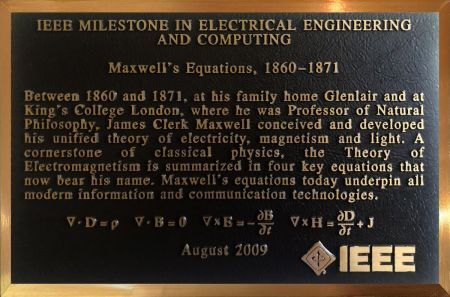John C. Baez's Blog, page 10
May 24, 2024
Agent-Based Models (Part 11)
Last time I began explaining how to run the Game of Life on our software for stochastic C-set rewriting systems. Remember that a stochastic stochastic C-set rewriting system consists of three parts:
• a category C that describes the type of data that’s stochastically evolving in time
• a collection of ‘rewrite rules’ that say how this data is allowed to change
• for each rewrite rule, a ‘timer’ that says the probability that we apply the rule as a function of time.
I explained all this with m...
May 18, 2024
Agent-Based Models (Part 10)
We’ve been hard at work here in Edinburgh. Kris Brown has created Julia code to implement the ‘stochastic C-set rewriting systems’ I described last time. I want to start explaining this code and also examples of how we use it.
I’ll start with an easy example of how we can use it. Kris decided to implement the famous cellular automaton called the Game of Life, so I’ll explain that. I won’t get very far today because there are a lot of prerequisites I want to cover, and I don’t want to rush t...
May 13, 2024
Agent-Based Models (Part 9)
Since May 1st, Kris Brown, Nathaniel Osgood, Xiaoyan Li, William Waites and I have been meeting daily in James Clerk Maxwell’s childhood home in Edinburgh.
We’re hard at work on our project called New Mathematics and Software for Agent-Based models. It’s impossible to explain everything we’re doing while it’s happening. But I want to record some of our work. So please pardon how I skim through a bunch of already known ideas in my desperate attempt to quickly reach the main point. I’ll try t...
May 4, 2024
Hexagonal Tiling Honeycomb

This picture by Roice Nelson shows a remarkable structure: the hexagonal tiling honeycomb.
What is it? Roughly speaking, a honeycomb is a way of filling 3d space with polyhedra. The most symmetrical honeycombs are the ‘regular’ ones. For any honeycomb, we define a flag to be a chosen vertex lying on a chosen edge lying on a chosen face lying on a chosen polyhedron. A honeycomb is regular if its geometrical symmetries act transitively on flags.
The most familiar regular honeycomb is ...
April 16, 2024
Agent-Based Models (Part 8)
Last time I presented a class of agent-based models where agents hop around a graph in a stochastic way. Each vertex of the graph is some ‘state’ agents can be in, and each edge is called a ‘transition’. In these models, the probability per time of an agent making a transition and leaving some state can depend on when it arrived at that state. It can also depend on which agents are in other states that are ‘linked’ to that edge—and when those agents arrived.
I’ve been trying to generalize this...
April 14, 2024
Protonium
It looks like they’ve found protonium in the decay of a heavy particle!
Protonium is made of a proton and an antiproton orbiting each other. It lasts a very short time before they annihilate each other.
It’s a bit like a hydrogen atom where the electron has been replaced with an antiproton! But it’s much smaller than a hydrogen atom. And unlike a hydrogen atom, which is held together by the electric force, protonium is mainly held together by the strong nuclear force.
There are various ways...
March 27, 2024
T Corona Borealis

Sometime this year, the star T Corona Borealis will go nova and become much brighter! At least that’s what a lot of astronomers think. So examine the sky between Arcturus and Vega now—and look again if you hear this event has happened. Normally this star is magnitude 10, too dim to see. When it goes nova is should reach magnitude 2 for a week—as bright as the North Star. So you will see a new star, which is the original meaning of ‘nova’.
But why do they think T Corona Borealis will g...
March 15, 2024
The Probability of Undecidability
There’s a lot we don’t know. There’s a lot we can’t know. But can we at least know how much we can’t know?
What fraction of mathematical statements are undecidable—that is, can be neither proved nor disproved? There are many ways to make this question precise… but it remains a bit mysterious. The best results I know appear, not in a published paper, but on MathOverflow!
In 1998, the Fields-medal winning topologist Michael Freedman conjectured that the fraction of statements that are provab...
March 13, 2024
The Probability of the Law of Excluded Middle
The Law of Excluded Middle says that for any statement P, “P or not P” is true.
Is this law true? In classical logic it is. But in intuitionistic logic it’s not.
So, in intuitionistic logic we can ask what’s the probability that a randomly chosen statement obeys the Law of Excluded Middle. And the answer is “at most 2/3—or else your logic is classical”.
This is a very nice new result by Benjamin Bumpus and Zoltan Kocsis:
• Benjamin Bumpus, Degree of classicality, Merlin’s Notebook, 27 Februa...
February 29, 2024
Nicholas Ludford
At first glance it’s amazing that one of the great British composers of the 1400s largely sank from view until his works were rediscovered in 1850.
But the reason is not hard to find. When the Puritans took over England, they burned not only witches and heretics, but also books — and music! They hated the complex polyphonic choral music of the Catholics.
So, in the history of British music, between the great polyphonists Robert Fayrfax (1465-1521) and John Taverner (1490-1545), there was a k...
John C. Baez's Blog
- John C. Baez's profile
- 29 followers






